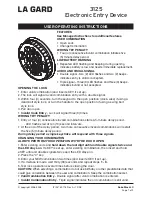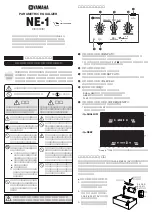Rubicon
2
Manual
Exponential vs. Linear FM
In general, there are two distinct types of FM, both of which are supported by the Rubicon
2
:
●
EXPONENTIAL FM
is the type found in many vintage analog mono synths of the 1970’s.
When you change the frequency of the modulator, you change the perceived
fundamental pitch that emerges from the carrier oscillator. Furthermore, because the
harmonic ratio of modulator-to-fundamental changes from note-to-note, neither the
resulting pitch nor the timbre track chromatically. This makes Exponential FM ideal for
clangorous, atonal sound effects. It’s a great source for experimental sounds, particularly
when the modulating pitch is, itself, modulated.
●
LINEAR FM
is the type more commonly associated with digital synths in the 1980’s,
although the linear FM circuitry in the Rubicon
2
is purely analog. When you change the
frequency of the modulator, you alter a note’s timbre without affecting its perceived pitch.
Furthermore, because the harmonic ratio of modulator to fundamental remains
consistent from note-to-note, both the resulting pitch and timbre track chromatically. This
makes Linear FM more “musical” than exponential FM, and it’s ideal for creating
harmonically complex waveforms that track across a range of notes.
Thru-Zero FM (TZFM)
When you frequency-modulate an oscillator, you cause its pitch to go up and down. In a typical
(non TZFM) linear FM circuit, the oscillator is biased such that, no matter how great the
modulation, the output pitch never dips below 0 Hz. Makes sense, right? After all, who ever
heard of a negative pitch?
A TZFM oscillator is one that allows the FM input to modulate pitch into negative territory (i.e.
“Through Zero”). It does this by reversing the direction of the oscillator whenever it’s asked to
produce negative frequencies. This insures that the oscillator will continue to produce sound
even when modulated into negative frequencies.
TZFM oscillators can produce “deeper” and “richer” timbres than standard, positive-only FM’d
oscillators. Though common in digital oscillators, achieving thru-zero FM is much more
complicated (and rare) in analog oscillators.
TZFM Symmetry
Symmetry sets the bias of the oscillator — the center point around which the incoming FM
waveform varies the output pitch of the oscillator. Changing the symmetry changes the relative
point around which frequency modulation occurs.
With the Rubicon
2
SYMMETRY knob set to its maximum (fully clockwise) position, the oscillator
is biased such that no amount of FM will ask the oscillator to dip into negative pitch. Similarly,
with symmetry set to its minimum (fully counterclockwise) value, the oscillator is biased such
that no amount of FM will ask the oscillator to produce a positive pitch. Basically, a fully negative
Page 21


















